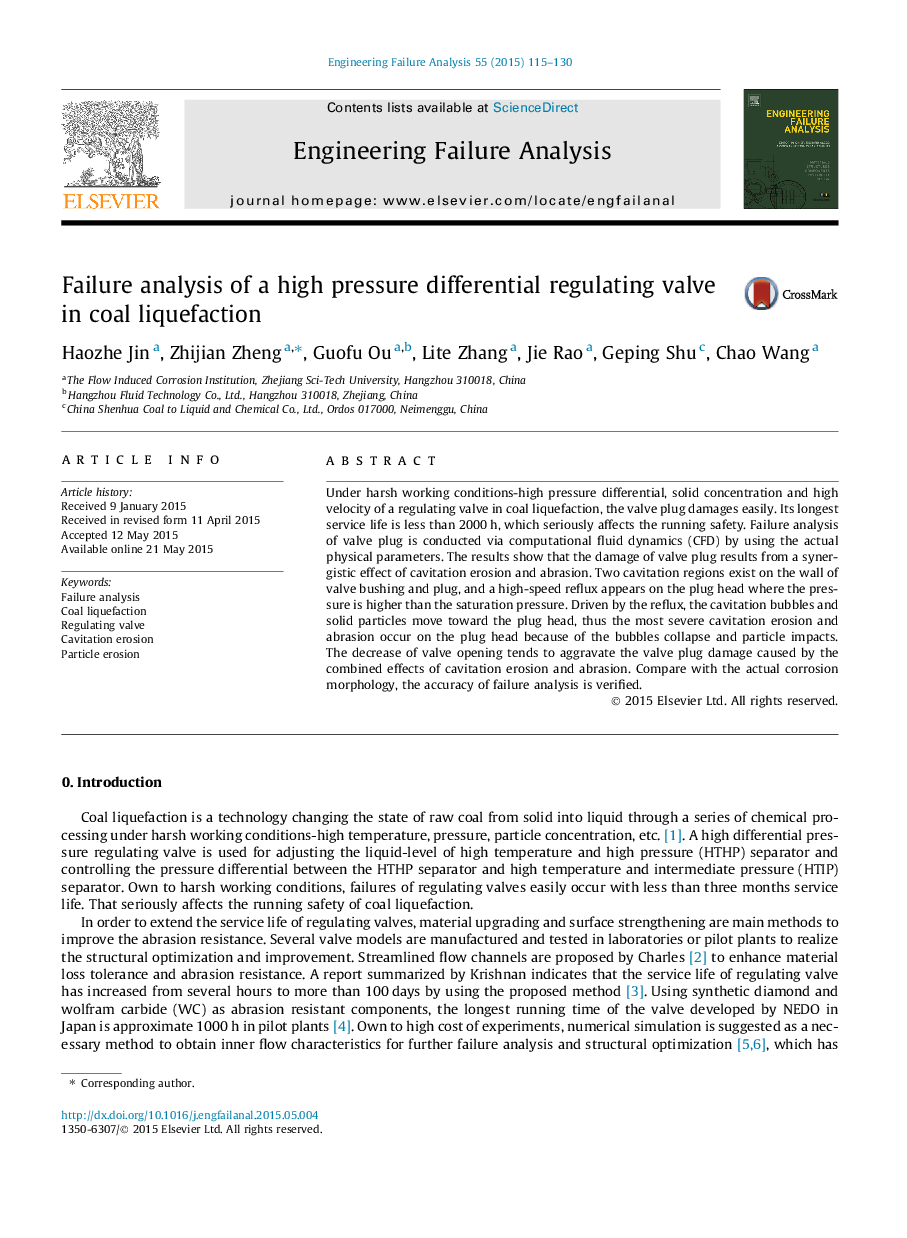| Article ID | Journal | Published Year | Pages | File Type |
|---|---|---|---|---|
| 763339 | Engineering Failure Analysis | 2015 | 16 Pages |
•Failure is caused by a combined effect of cavitation erosion and particle erosion.•Decreasing valve opening will increase the erosion rate and cavitation intensity.•High-speed reflux flow is the main factor leading to the damage of valve plug.•Damage process develops from the head to the root of valve plug.•Numerical results are in a good agreement with actual failure morphology.
Under harsh working conditions-high pressure differential, solid concentration and high velocity of a regulating valve in coal liquefaction, the valve plug damages easily. Its longest service life is less than 2000 h, which seriously affects the running safety. Failure analysis of valve plug is conducted via computational fluid dynamics (CFD) by using the actual physical parameters. The results show that the damage of valve plug results from a synergistic effect of cavitation erosion and abrasion. Two cavitation regions exist on the wall of valve bushing and plug, and a high-speed reflux appears on the plug head where the pressure is higher than the saturation pressure. Driven by the reflux, the cavitation bubbles and solid particles move toward the plug head, thus the most severe cavitation erosion and abrasion occur on the plug head because of the bubbles collapse and particle impacts. The decrease of valve opening tends to aggravate the valve plug damage caused by the combined effects of cavitation erosion and abrasion. Compare with the actual corrosion morphology, the accuracy of failure analysis is verified.
